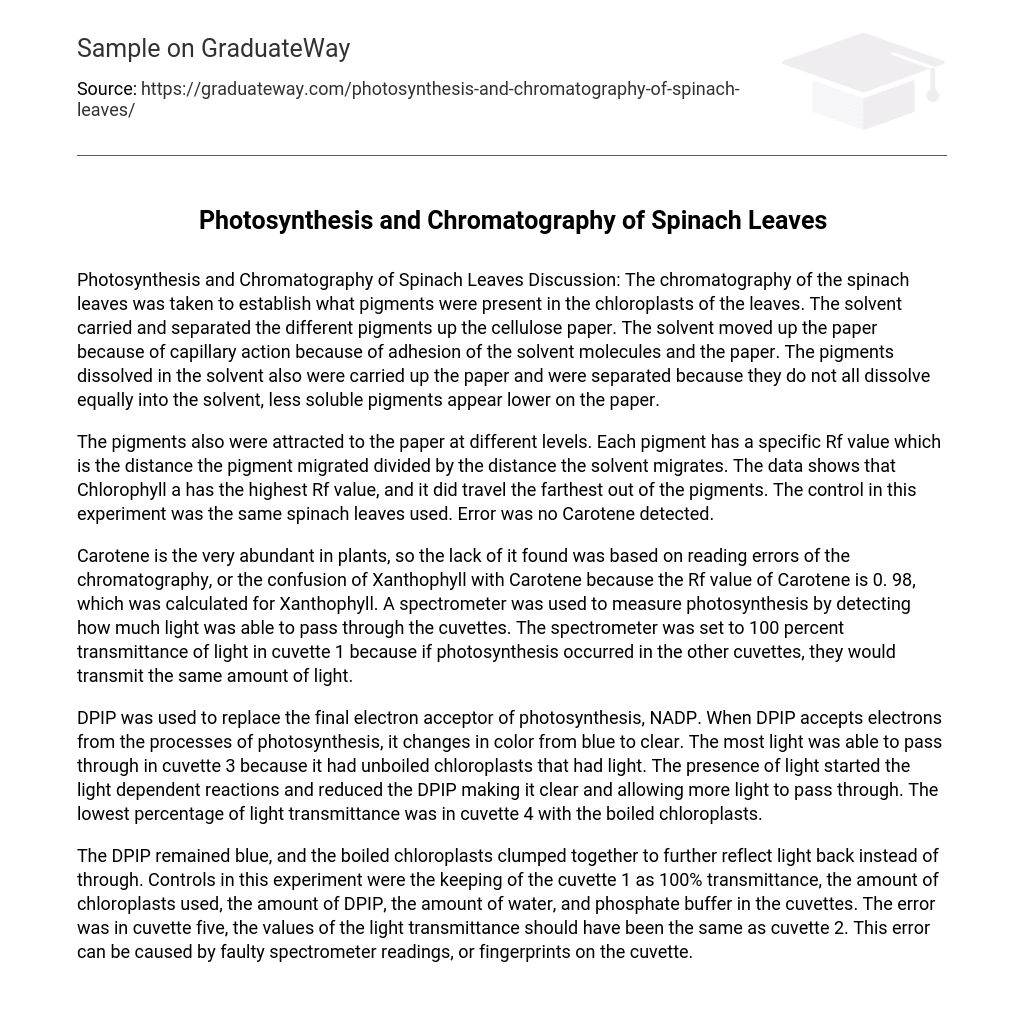The purpose of conducting chromatography on spinach leaves was to identify the pigments that are present in the chloroplasts of these leaves. During chromatography, a solvent was used to move and separate the various pigments up the cellulose paper. This movement occurred due to capillary action, which is caused by the adhesion between the solvent molecules and the paper. Furthermore, as the pigments dissolved in the solvent, they were transported up the paper. However, since not all pigments dissolve equally into the solvent, those that are less soluble appeared lower on the paper.
The pigments were attracted to the paper at varying levels, with each pigment having a specific Rf value. The Rf value is calculated by dividing the distance the pigment migrated by the distance the solvent moved. The results indicate that Chlorophyll a had the highest Rf value and traveled the greatest distance among the pigments. The control in this experiment involved using the same spinach leaves.
The scarcity of Carotene in plants was initially attributed to mistakes in chromatography readings or the misidentification of Xanthophyll as Carotene due to their similar Rf values. Carotene has an Rf value of 0.98, which was mistakenly calculated for Xanthophyll. To measure photosynthesis, a spectrometer was employed to determine the amount of light that could pass through the cuvettes. Cuvette 1 was set to 100 percent transmittance as a control, assuming that any other cuvettes with photosynthesis would also transmit the same amount of light.
DPIP was utilized as a substitute for NADP, the final electron acceptor in the process of photosynthesis. As DPIP receives electrons from the photosynthetic processes, it undergoes a color change from blue to clear. Cuvette 3, which contained unboiled chloroplasts exposed to light, demonstrated the highest amount of light transmission. The presence of light initiated the light-dependent reactions and resulted in the reduction of DPIP, causing it to become clear and enabling more light to pass through. Conversely, cuvette 4, containing boiled chloroplasts, exhibited the lowest percentage of light transmittance.
The DPIP stayed blue, causing the boiled chloroplasts to clump together and reflect light back instead of letting it pass through. Several controls were implemented in this experiment, including keeping cuvette 1 as 100% transmittance and monitoring the quantities of chloroplasts, DPIP, water, and phosphate buffer in the cuvettes. The error occurred in cuvette five, where the light transmittance values should have been the same as cuvette 2. This mistake could have been caused by inaccurate spectrometer readings or fingerprints on the cuvette.





